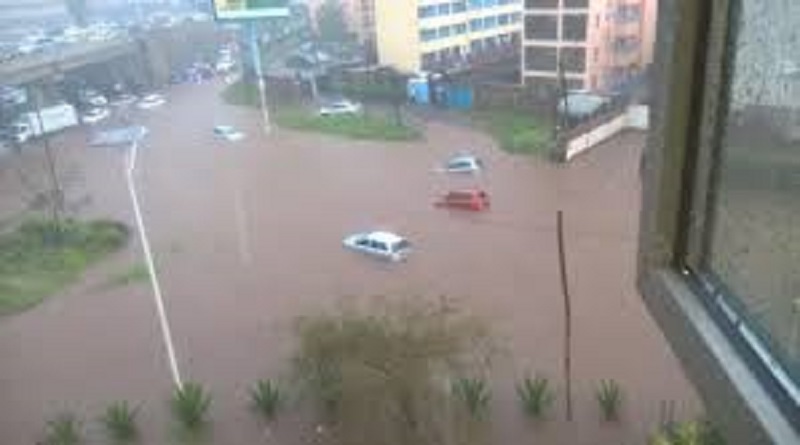Heavy rainfall hits Kenya, 7 others amid locust invasion
Exceptionally heavy seasonal rains across East Africa since late April have resulted in widespread floods that caused a heavy loss of life and property, compounding the risks to human health and food security from the COVID-19 pandemic and the most serious desert locust invasion in decades.
Burundi, Djibouti, Democratic Republic of Congo, Ethiopia, Kenya, Rwanda, Somalia, Uganda and Yemen have been badly affected. More than 260 people have reportedly been killed, tens of thousands of people have been displaced, and crops, homes and infrastructure swept away by flash floods and landslides.
Rivers have burst their banks. Lake Victoria, Africa’s biggest inland water body, has spilled over its banks in places. Recent observations of Lake Victoria water levels by the Lake Victoria Basin Commission (LVBC) and complemented by NASA/Poseidon satellite-based observations (NASA/POSEIDON Lake Levels) depict lake water levels which are the highest on the historical 60-year local record.
The rainfall forecast indicates an increased likelihood for continued moderate to locally very heavy rains in most parts of the region in coming week, with heightened risks of flash floods in flood prone areas. However, rainfall intensity is expected to subside in mid-May.
National Meteorological and Hydrological Services have been active in issuing forecasts and warnings both on land and in Lake Victoria itself. East African communities have improved the dissemination of new and enhanced weather information to try to protect lives and property from hazards such as floods and flash floods thanks to support from WMO initiatives.
With support from the WMO Severe Weather Forecasting Programme in Eastern Africa and the High-Impact Weather Lake System project, known as HIGHWAY, Kenya, Uganda and Tanzania are issuing enhanced marine forecasts and early warning for fishermen and small craft operators in Lake Victoria. Rwanda is issuing enhanced forecasts in lake Kivu.
Whatsapp messages and community Radios are being used in Kenya and Uganda for the dissemination of early warning products in local languages. Warning colour coded flags are displayed on landing sites in Kenya and Uganda, and beach management units notice boards relay the information as well.
The on-going exceptional seasonal rains are mostly attributed to sustained warmer-than-normal Indian Ocean, coupled with favourable atmospheric conditions over much of East of Africa. The seasonal climate outlook for the Greater Horn of Africa had correctly forecast wetter than usual season in western Kenya, south-western and eastern Uganda as well as eastern Rwanda and western parts of South Sudan. This increases the risk of flash floods in these areas.
The October, November and December rainfall season was one of the wettest on record, leading to major floods across the region, which affected infrastructure and livelihoods.
Desert Locust invasion
The wet weather conditions have allowed desert locusts to increase further and spread within the Horn of Africa (and South-West Asia), despite control operations, according to the latest bulletin issued by the Food and Agriculture Organization of the United Nations (FAO) and updates from the IGAD Climate Predications and Adaptation Centre, ICPAC, which is a WMO Regional Climate Centre.
desert locusts May2020“Along with climate shocks, conflict and acute food insecurity, the East Africa region now faces a hunger threat from the desert locust. This is a scourge of biblical proportions,” commented the FAO’s Locust Hub.
ICPAC said the situation remains extremely serious in Eastern Africa. Areas with agro-pastoral farming have the highest risk of locusts invading crops. Most of the young adult locusts have begun aggregating to swarms in invaded areas of southern, western and northern Ethiopia. Rains intensified in April and favored the crop season with plants in most crop areas now in early vegetative stages.
The current situation and forecast are alarming as locust infestations are expected to extend to other areas in the Horn of Africa and southwest Asia. Although control operations have reduced locust populations, another generation of breeding will cause locust numbers to increase further as new hopper bands and swarms form in Kenya, Ethiopia and Somalia during May and June, according to FAO.
Swarms are expected to move further north in Ethiopia and Somalia with a risk that a few swarms may reach Eritrea and Sudan in mid-June. The situation is very worrisome in Yemen because several swarms laid eggs in the interior where widespread, heavy rains fell, which will allow hatching and hopper bands and swarms to form.




